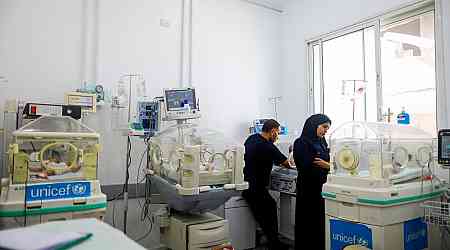
For people battling prostate cancer, the fight can feel like a contest between the disease and the doctors. Their body is the battlefield, but they may nonetheless feel marginalized—more bystander than active participant.
“People sometimes feel like they’ve lost control of their own body,” says Lynda Balneaves, a professor in the University of Manitoba College of Nursing in Winnipeg, who studies the role of complementary and alternative methods (CAM) in cancer care. “Complementary therapies are a way to feel engaged; they’re something people can pursue on their own to regain a sense of control.”
[time-brightcove not-tgx=”true”]By some estimates, 87% of individuals with cancer have tried at least one form of CAM. While patients may pursue these therapies in the hopes of slowing or reversing the course of their disease, they may also look to complementary or alternative medicine for help managing the symptoms and side effects of their prostate cancer treatment. “Chemotherapy and surgery and drug therapies all produce side effects, and sometimes we as healthcare professionals don’t do as great a job managing those side effects as we do treating the disease,” Balneaves says.
Since it’s likely their patients will pursue complementary therapies during the course of their treatment, care providers can play a supportive role by steering people toward evidence-based therapies and away from remedies that may be a poor use of time or money—or potentially even dangerous. “There are potential adverse interactions with some CAM treatments, and so we want to help individuals keep safety front of mind,” Balneaves says.
Here, she and other experts describe the complementary therapy landscape for people with prostate cancer.
The ‘Prostate 8’
For a 2017 review in the World Journal of Urology, a team of researchers from Harvard Medical School and the University of California, San Francisco, examined dozens of epidemiological studies in an effort to determine whether lifestyle factors could influence the progression of prostate cancer, if employed along with traditional medical and surgical intervention, not in place of them. They found evidence that eight healthy lifestyle modifications were associated with a decreased risk of cancer progression. The adoption of these lifestyle factors, which the study team nicknamed the “Prostate 8,” appear to be a safe and potentially effective way for people with cancer to improve the course of their treatment.
Read More: Why Are So Many Young People Getting Cancer? It’s Complicated
“The key take-home message from this work is that there is likely a series of lifestyle practices that, individually, have modest effects, but collectively may have a significant benefit,” says Dr. Charles Ryan, a member and attending physician at Memorial Sloan Kettering Cancer Center in New York City, who was not involved in the study but is very familiar with its findings. If patients are looking for safe ways to improve their odds, he says these are a great place to start. “I would advise physicians treating this disease to appreciate the metabolic nature of prostate cancer and the beneficial role of lifestyle modification.”
Here’s a rundown of the Prostate 8, beginning with the lifestyle factors that appear to matter most:
Exercise Vigorously
Regular bouts of vigorous physical activity—defined loosely as exercise that causes sweating, as well as increased heart rate and breathing—have been found to significantly reduce a patient’s prostate cancer risks. Men who, following diagnosis, increased their physical activity to three or more hours per week of vigorous activity enjoyed lower risk of death from the disease than those who reduced their vigorous physical activity following diagnosis, research has found.
Don’t Smoke
“Smoking increases risk of aggressive prostate cancer and prostate cancer-specific mortality,” the Prostate 8 researchers found. “Smokers consistently have a higher risk of prostate cancer progression, including biochemical recurrence, metastasis, hormone-refractory prostate cancer, and prostate cancer-specific mortality.” They recommended that people with prostate cancer avoid all tobacco products. (The same, of course, is true for people without prostate cancer.)
Replace Saturated Fats With Vegetable Fats
Swapping saturated fats such as butter for healthy sources of vegetable oils (such as olive oil and nuts) seems to be protective. “One study reported that consuming high amounts of fat from vegetable sources after diagnosis of non-metastatic prostate cancer was associated with lower risk of developing lethal disease,” the Prostate 8 team wrote.
Read More: 6 Health Myths About Oils
Eat Cruciferous Vegetables
The consumption of broccoli, cauliflower, kale, brussels sprouts, and other cruciferous vegetables produces metabolites that may slow the growth of cancer cells and provide beneficial effects. One study in the International Journal of Cancer found that men with prostate cancer who ate a lot of cruciferous vegetables (roughly six servings daily) had a lower risk of progression than men who ate less than one serving per day of these vegetables.
Consume Cooked Tomatoes
Eating at least two servings of cooked tomatoes—from sautéed or roasted tomatoes to tomato soup and pasta sauce—seems to be protective against the development of aggressive forms of prostate cancer. Eating these cooked-tomato foods with fats (like olive oil) may help the body absorb the tomato’s healthy antioxidants.
Eat Fish
“Two servings of fish per week after diagnosis was associated with a 17% lower risk of prostate cancer recurrence,” wrote the Prostate 8 team, citing a study in the journal Cancer Causes and Control. As with many other studies of healthy fish intake, the researchers recommended eating fatty fish like salmon, sardines, mackerel, and herring.
Avoid Processed Meats
A lot of work has linked the consumption of processed red meat (salami, bologna, sausage, bacon, etc.) to increased mortality and illness. There’s also evidence that these meats can contribute to the development and progression of prostate cancer. Several studies have looked directly at the effect of processed red meat intake after a prostate cancer diagnosis. While they did not find a significant effect, both found outcomes tended to be worse among men who ate these foods frequently.
Avoid Whole Milk
One study in The Journal of Nutrition of men diagnosed with prostate cancer found that those who drank more than one serving per day of whole milk had a significantly increased risk of disease progression to fatal cancer compared to men who drank less than half a serving per day. “In contrast, consumption of low-fat dairy foods has not been consistently linked to adverse outcomes after a prostate cancer diagnosis,” the Prostate 8 team wrote.
While the research on these eight lifestyle changes is ongoing, and the data supporting some of them are not robust, Ryan says these are nonetheless safe changes patients can make that, together, appear to help lower their risks for deadly disease.
Reducing the Burden of Side Effects
Along with lifestyle changes that may affect the disease’s progression, a number of complementary therapies may help patients with prostate cancer address the symptoms of their disease and the side effects of treatment.
Here, it may be helpful to break down these therapies based on the symptom or side effect they may help to relieve.
Pain
“We have found that acupuncture, acupressure, and reflexology have all been helpful with general cancer-related pain,” Balneaves says. One 2019 investigation in JAMA Oncology found moderate evidence that “acupuncture and/or acupressure was significantly associated with lower pain intensity in patients with cancer compared with a sham control.” Research has also found that foot reflexology—a type of foot massage—was effective in reducing pain among cancer patients.
Fatigue
“Fatigue is a huge issue for prostate cancer patients, especially post-treatment,” Balneaves says. “Exercise, as much as a person’s able to, does seem to alleviate fatigue.” There is also evidence that mindfulness meditation, as well as movement therapies such as yoga and tai chi, may help reduce fatigue and improve sleep among cancer patients, she says.
Read More: Why Some Men Keep Their Prostate Cancer a Secret
Anxiety and Depression
Both mindfulness practices and relaxation therapies seem to help people with cancer manage any resulting anxiety or depression, Balneaves says. For example, progressive muscle relaxation therapy—an intervention that involves systematically tensing and then relaxing the body’s muscles—was found to reduce anxiety and depression in patients with prostate cancer, according to research in Evidence-Based Complementary and Alternative Medicine. “We’ve also found that aromatherapy, specifically lavender, can help some people with anxiety,” she says.
Sleep
Research has found that some of the interventions mentioned above—such as regular exercise and healthy eating—can help improve sleep among people with prostate cancer. Yoga and other movement therapies may also be helpful for prostate cancer patients who are struggling to sleep, Balneaves says.
The Shaky Role of Supplements
Patients with prostate cancer frequently show interest in supplements—from vitamins and minerals to more exotic pills and powders. “There are a lot of supplements out there that people want to know about,” Balneaves says. “The problem is that it’s hard to get funding for studies on these supplements.”
She says the research that does exist is a bit of a mixed bag. “There’s been some work looking at pomegranate extract, for example, that shows it does seem to impact important biomarkers and lengthen PSA doubling time,” she says. “But then a large clinical trial didn’t show the same beneficial impact.”
These sorts of conflicting findings are commonplace when it comes to supplements. “There’s been interest in green tea, and also in lycopene from tomatoes, but the evidence is mixed,” she says. Furthermore, she says quality control issues—such as contamination with heavy metals—is an ongoing challenge for some supplement makers.
It’s possible that supplements may turn out to provide a benefit for people with prostate cancer, but right now it’s hard to say conclusively what is or isn’t worth trying.
Complementary, Not Alternative
Experts who have studied complementary therapies for prostate cancer say these are an important part of providing patients with complete and integrative care.
“Especially for men diagnosed with earlier stages of prostate cancer that don’t yet require treatment, various lifestyle modifications are associated with beneficial outcomes, including, in some studies, lower risk of death from prostate cancer,” Ryan says.
However, he stresses the importance of telling patients that these sorts of interventions should only be used in addition to formal medical interventions—not in place of them. “There’s no data to suggest that lifestyle modification is a replacement for standard treatment for this cancer,” Ryan says. “These are not going to take the place of having surgery to have the prostate removed, for example.”
Fortunately, most patients with prostate cancer aren’t looking to swap out conventional medicine for CAM therapies. “Most people just want to cover all the bases,” Balneaves says. “We’ve found that only 3% to 5% ever consider withdrawing or refusing conventional therapies, so most patients are just trying to enhance the conventional cancer treatments they’re receiving.”
Read More: How to Cope With the Financial Toll of Cancer
While she’s supportive of these efforts, she also warns that some patients may overemphasize lifestyle changes in an effort to get better. “I see some people almost take the joy out of life because they feel everything must be strictly managed,” she says.
“I tell people to eat a healthy diet, move every day, and try to maintain or lose weight,” she adds. “Engaging in some form of mindfulness training or yoga—things that allow you to remain centered in self—is also helpful.”
The big takeaway is that an integrative approach to care—one that involves both traditional and complementary forms of therapy—is likely to provide the best outcomes.

























